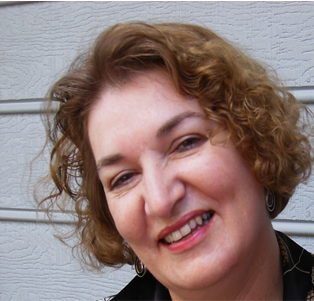 |
|
One of the first things I did when I took the position of Individual & Community Preparedness Officer was to gather all the New England external partners I ever met and ask them to get on the phone with me, once a month, and tell me about your work to prepare our communities for disaster.
My goal was to create a Culture of Preparedness by listening to others who are in the communities of culture where change happens.
That was seven years ago.
|
Throughout several disasters where I was deployed, including the pandemic many of you continued to participate, share your best practices, and even reach out to others after the call.
New England is resilient. We lean on each other to share, learn, and grow.
On December 31, 2021 I will be leaving my post as a full time Preparedness officer. I am taking a retirement from full time work but plan to continue working with FEMA in a reservist capacity. Perhaps I will see you in a training, or in disaster recovery operations or during an exercise that you might participate?
TalkShop will continue with my partners. Every second Thursday at 9Am TalkShop will provide a topic and a discussion to keep you updated and share ideas and resources to you and the work you do to prepare your communities.
It has been my honor and pleasure to work with all of you. Thank you for your input, ideas and suggestions that make TalkShop so valuable to the people we serve.
We will meet again and wherever we meet, you can be sure I will be ready to listen as we talk shop!
Thank you for your support!
 |
|
TalkShop is held every second Thursday of every month at 9am. TalkShop is a place where the top issues facing the preparedness and recovery community are explored in greater detail, bringing in experts from Region 1 who help to guide the conversation. |
TalkShop Review:
Over the past two months Talk Shop has focused on Faith Based Engagement and Partnership. Below, is a summary of what was covered and some resources that are available:
Faith based organizations are critically important partners in preparedness and response efforts. Having the knowledge to properly engage and partner with faith based organizations is invaluable when local community organizers and emergency managers want to prepare citizens and collaborate during recovery.
It is important that as emergency managers, we have the tools to help us navigate religious settings and traditions so that we can better collaborate and respectfully partner up. In the last couple of Talk Shops we covered how to make that initial conversation happen, recognizing sacred spaces, asking the right questions, and where the faith community fits in the disaster response effort.
Resources for Emergency Managers Faith Based Engagement:
- Talk Shop Engaging Faith Community Powerpoint Slides (September Talk Shop)
- Religious holiday calendar - https://www.diversityresources.com/interfaith-calendar-2021/
- COURSE: IS-505 Concepts of Religious Literacy for the Emergency Manager FEMA - Emergency Management Institute (EMI) Course | IS-505: Concepts of Religious Literacy for Emergency Management
- FEMA Tip Sheet: Creating a Faith Based Engagement Plan
- FEMA Tip Sheet: Cultural Competency
- FEMA Tip Sheet: Resources and Tools for Faith Based Engagement
For the October Talk Shop, we continued the conversation around faith based engagement by hosting a panel discussion with three emergency managers that are also members of the three Abrahamic Faiths (Islam, Catholic/Christianity, and Jewish Orthodox). Each speaker spoke to the needs and capabilities of faith based organizations within each of the three faiths. To learn more about the speakers, please see below.
 |
|
Chris Farrand is the Regional Coordinator of Emergency Disaster Services (EDS) for The Salvation Army in MA, CT, and RI. Chris has worked for The Salvation Army for 12 years and oversees the development and operations of the EDS program. Chris has managed responses to the Merrimack Valley Gas Explosions, the 2018 Tri-Nor'easters, the Boston Marathon Bombing, the Springfield, MA Tornadoes and currently the COVID-19 Pandemic. He has also deployed as part of an IMAT team to Hurricane Michael, Puerto Rico after Hurricane Maria, and to Haiti after the devastating earthquakes. To learn more about the Salvation Army click here. |
|
Sister Jane Aslam is in a leadership position with nation’s largest domestic, Islamic faith-based, social services and disaster response agency, ICNA. She is responsible for guidance and direction, implementation, oversight and monitoring of the national, disaster response program. Including all phases of disaster. She present at national conferences, conduct disaster related workshops, facilitate community based team building, and advocate for the needs of survivors of disasters – both Muslim and non-Muslim.
For more information about Islamic Emergency Management please click here: ICNA Relief USA – Muslims For Humanity
|
|
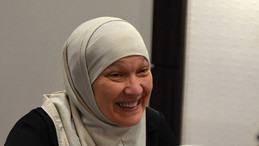 |
 |
|
Seth Gardner, Emergency Manager with NECHAMA. NECHAMA – Jewish Response to Disaster, is the only Jewish organization to offer sustained direct services in the US following the onset of a hurricane, tornado, flood, or other natural disaster.
NECHAMA’s programs are direct and effective ways for communities to prepare for, respond to, and recover from disasters. Their programs aim to provide direct disaster assistance, training, and other support so that affected individuals, families, and small businesses can respond more effectively, saving precious time and money. To learn more about NECHAMA please click here.
|

Next Talk Shop is Wednesday November 10th at 9AM
For TalkShop November we open the dialogue with emergency management specialists who work with our New England Tribal leaders and NE Immigration Services. The discussion will help us better understand the role of emergency managers while communicating and helping to prepare indigenous communities and new immigrants to our States.
Please join us and have your questions ready!
Here is the link for upcoming Talk Shops:
Join ZoomGov Meeting
https://fema.zoomgov.com/j/1607764428
Meeting ID: 160 776 4428
Passcode: Talk2021
One tap mobile
+16692545252,,1607764428#,,,,,,0#,,84854444# US (San Jose)
+16468287666,,1607764428#,,,,,,0#,,84854444# US (New York)
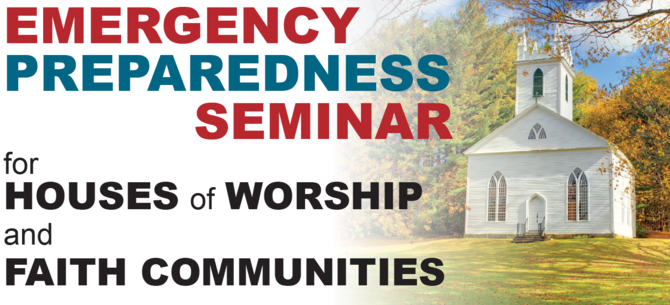 NH HSEM is excited to announce three great opportunities to attend a Houses of Worship Emergency Preparedness Seminar. The training provides awareness and preparation information in whole community emergency preparedness, building and exercising emergency operations plans, and response to active threats. The information provided is the same and there is no cost to attend these events. We hope to see you at one of these seminars.
WHEN AND WHERE
Sat., Nov. 20, 2021
1:00 pm - 4:00 pm (Sign in starts at 12:30 pm)
Jaffrey Hope
Fellowship Church
16 Prescott Rd Jaffrey, NH 03452
Please click this link to register:
https://prd.blogs.nh.gov/dos/hsem/?page_id=561&ee=1240
Sunday, Feb. 13, 2022
2:00 pm - 5:00 pm (Sign in starts at 1:30 pm)
Jewish Federation of
New Hampshire
273 South River Rd. Unit 5, (Victoria Plaza)
Bedford, NH 03110
Please click this link to register:
https://prd.blogs.nh.gov/dos/hsem/?page_id=561&ee=1257
PURPOSE
• To increase the participant’s knowledge about Emergency Preparedness.
• To provide participants with insight on emergency operations planning.
TOPICS AND PRESENTERS
• Emergency Preparedness Primer & Whole Community Approach
♦Robert Christensen (Operations Section Chief State of New Hampshire Homeland Security & Emergency Management and former minister)
• Emergency and Safety Planning Fundamentals
♦Jason Climer (Protective Security Advisor Cybersecurity and Infrastructure Security Agency U.S. Department of Homeland Security
• Civilian Response to Active Shooter Event (CRASE)
♦Steven Cooper (Field Representative II State of New Hampshire Homeland Security & Emergency Management)
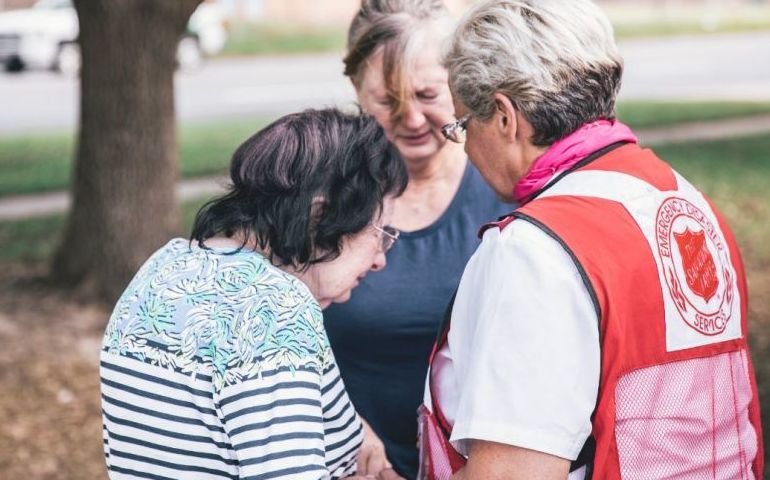 For a recent presentation hosted by the Connecticut VOAD on Emotional and Psychological Wellness for Emergency Managers conducted by Chris Farrand, Emergency Management Director for the Salvation Army, and Fred Meade, Disaster Chaplain, please click here.
Region 1 Individual and Community Preparedness Division has been providing emotional resiliency training to FEMA Region 1 staff to help better inform and educate about the trauma and stress that is related to responding to emergencies and disasters as emergency managers. Responding to traumatic situations like a disaster or an emergency can cause trigger stress, anxiety, and depression for emergency responders over time. In turn, these factors can cause higher rates of performance decline in the job of emergency manager and even cause burnout. It is critically important that emergency managers understand the emotional toll and burden that they are having to carry for performing their jobs and to have access to the psychological and emotional tools to help mitigate the negative effect that these emotional factors can have.
For a recent presentation hosted by the Connecticut VOAD on Emotional and Psychological Wellness for Emergency Managers conducted by Chris Farrand, Emergency Management Director for the Salvation Army, and Fred Meade, Disaster Chaplain, please click here.
Presenters:
For a list of available resources for emotional and psychological wellbeing related to disaster services and emergency management, please see below:
Training Options on the topic of Emotional and Psychological Wellbeing
 Prepare in a year! Our partners at the Emergency Management Division in the State of Washington has developed a one hour guide to easy preparedness actions that you can take every month to make you, your friends and family more prepared for a disrupting event.
For a full description of the Month of November Preparedness Action, please see page 21 of the full Prepare In A Year guidebook
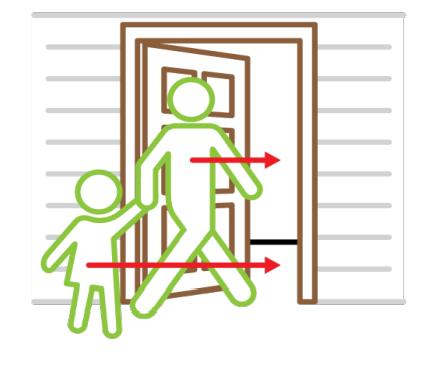 |
|
6 Sheltering In Place Activities To Take During An Emergency:
1. Go Inside Immediately
2. Tightly Lock All Doors And Windows
3. Shut Off Fans And Devices That Circulate Air Throughout Your Home
4. Get Into Your Pre-Selected Room And Seal It Tightly
5. Listen To Media For Instructions
6. Thoroughly Air Out Your Home Once The Emergency Is Over
|
Shelter in place is not the same as “staying inside” a building. Sheltering in place is creating a “safe room” in your home. A true shelter-in-place order is because of a chemical, biological or radiological threat. If a chemical agent leak happens (i.e. ammonia, radiation, hazardous materials), authorities will instruct people to either shelter where they are and seal the premises (shelter in place) or evacuate immediately. A chemical release is an accidental release of harmful chemicals into the air. It can occur at manufacturing plants, from accidents involving transport trucks or trains, from terrorist acts or even as a result of a fire at an industrial area. Generally, shelter where you are unless directed otherwise by response officials. It is only natural to want to be with your loved ones, but it is safer to stay where you are. Do not attempt to get your children from school or daycare. Instead, ask your school ahead of time what their plans are.
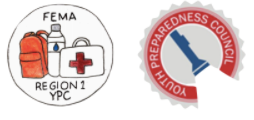 |
|
The purpose of the FEMA Region One Youth Preparedness Council is to actively involve teens in emergency management and preparedness, and present them with opportunities to serve their communities in the most efficient way possible. |
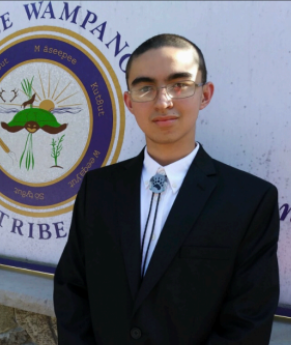 |
|
Hunter Tobey: Hunter is a senior student at the Mashpee High School in Mashpee, Massachusetts. He is currently in a dual enrollment student in Emergency Management at the MA Maritime Academy. Hunter is also Mashpee Wampanoag Tribe Community Emergency Response Team
(CERT) trained. During the pandemic, Hunter was awarded funding for positive message bags to assist individuals with special needs. Hunter will continue to work closely with the tribal community addressing safety measures and preparedness efforts. Hunter hopes that through this
experience he can make a meaningful contribution to the FEMA Youth Preparedness Regional and National Councils. |
I am Adeethyia Shankar, I am 16 years old, I am a rising junior at Brookfield High School, and I have been a member of FEMA’s Region 1 Youth Preparedness Council since 2019. I became passionate about emergency preparedness after a macro-burst hit my hometown of Brookfield, CT, when I signed up to volunteer on the Town Restoration team. Outside of the YPC, I am a USCF expert chess player, I was a Mathcounts National Finalist, and now, in high school, I represent my school at state, national, and international math competitions. In addition, I have been a CT HOSA state officer for two years, serving as Vice President of Development, in my school, I am the president of the Red Cross club, and furthermore, I play on my school’s golf team. |
|
 |
 |
|
Hello, my name is Keely Clapp. I am 16 years old and a junior in high school. I am from New Bedford Massachusetts. I attend a vocational high school and I am studying legal and protective. I am hoping to eventually attend Dartmouth university, and graduate from the nursing
program. My main goal for my future time on the YPC is to help integrate Alice training into schools, helping students learn what to do in the case of an active shooter. Another thing I would like to accomplish with my time on the council is to help children establish what to do if someone in their house is choking. |
Hello, my name is Moira Sankey. I am a resident of rural Maine, and am currently in my Senior year of high school. This is my fourth year on the council, with one of my previous projects being that of educating third through fifth graders on the basics of preparedness. Some activities that I love include reading, photography, journalism, working with children through teaching opportunities and summer camps, volunteering in my local communities, and show choir. This year, my goal is to begin a newsletter encompassing the purpose of the YPC, as well as spread
awareness for exactly what we accomplish. |
|
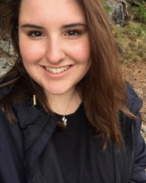 |
 |
|
Hi, My name is Hope Motta, I am 14 years old, and in the tenth grade. I am a homeschool student. I live in North Adam’s Massachusetts; and am interested in helping people, public speaking, and teaching little kids. I’ve been on FEMA Region I YPC for four years. I got into the YPC because I was creating a 4H VP ( a VP is a visual presentation) about Stop the Bleed, and called FEMA to obtain permission to use their information, and to ask for more information for my presentation. This is how I met Mrs. Arlene Magoon and Mrs. Sara Varela. What I hope to learn in the YPC is how to connect with community, state, and federal agencies to coordinate in educating my community in awareness and emergency preparedness; how to effectively work on team projects; and lastly, how to make a teen CERT in my community. |
My name is Michael Herdegen, I am 14 years old and I'm currently in 8th grade. I have been on the Youth Preparedness Council for 1 year. When I am older I would like to be a teacher. I am a black belt in taekwondo! |
|
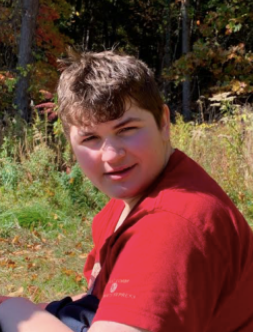 |
 |
|
My name is Katarina Anderson, I am 17 years old and I am in my senior year at Granby Memorial High School, Granby Connecticut. This is my third year on FEMA Region I YPC. Granby Memorial High School is recognized as a Connecticut Vanguard School for excellent academic performance. In 2019, I was recognized by the administration of
Granby Memorial High School for Exemplary Achievement in Art. I have a few goals and outcomes I would like to achieve while in the council. I have collaborate with others on creating the Region 1 YPC logo. I would also like to work with others on the possibility of creating a storybook about preparedness. I look forward to working with my peers and others learning about FEMA and how we can share FEMA’s message
about preparedness. |
Bodie Thompson is a 14 year old recent 8th grade graduate who will be attending Lincoln-Sudbury High school. He was the recipient of multiple medals given by the Massachusetts Maritime Humane Society and U.S. Coast Guard for saving a life. And, he is now also a new member to the Region 1 FEMA YPC. |
|
 |
 |
|
My name is Kalliana Marek and I am a 15 year old rising senior from Cranston, RI. In my community, I dedicate much of my time to furthering action on climate change. From my positions as co-group leader of RI Citizens Climate Lobby and chair of the RI Climate Reality Project, to my participation in projects to incorporate solar energy in elementary schools and involve fishermen in climate action, I do whatever I can to help the cause. Aside from my work in climate advocacy, I love working with young kids, travelling, and studying different languages and cultures. |
Ranjana (Jaanu) Ramesh is a junior in high school, from Chelmsford, Massachusetts. She is deeply passionate about policy, service, and science, and finds that these interests intersect in the human health, climate, and equity-based aspects of preparedness. Jaanu loves volunteering at community clinics and preparedness events such as the Bike Safety Rodeo as an MRC youth member, representing the Upper Valley. The Red Cross’ goal of “turning compassion into action” also resonates deeply with Jaanu; she is a biomedical and a disaster services volunteer. Jaanu is a Region 1 and a national YPC representative. As a council member, she hopes also to work with the Red Cross and FEMA in promoting Psychological First Aid training and the importance of mental wellness, and to research accessibility of preparedness resources in disadvantaged communities. |
|
 |
 |
|
Hi, my name is Natanael Regis but most of my friends call me Nat. I am a 17-year-old immigrant student at Brockton High, I speak French, Haitian creole including English. I was born and raised in Haiti where I witnessed the 2010 earthquake which devastated my country till this day. This catastrophe led me to believe in preparedness because if my country was educated on preparedness, if they had a natural disaster emergency plan it could have saved many lives and not affect the
economy as much. But beside all that I also like to have fun, like hanging out with friends and taking long walks on the beach barefoot. My all-time favorite shows are Vampire Diary and iZombie, I am also an anime fan. I am looking forward to working and learning from you guys. |
Hi! My name is Prajana Sriram. I am from Westford, MA. I am 14 years old and am a sophomore in high school. I eventually want to major in neuroscience and become a neurologist. This is my first year as part of the FEMA Region 1 YPC. For my project I either want to do something regarding helping people be prepared for a medical emergency or helping older and homebound residents be prepared for a storm. Some activities that I love to do in my free time is, tennis, photography, art journaling, and playing the violin. My goal is to gain experience and exposure to the world of emergency preparedness as well as learn more about the YPC newsletter. |
|
 |
 |
|
Hello, my name is Sophie Lesinski . I am going into sophomore year at Triton High school in Massachusetts. This is my first year on the council and I am exited to be involved in making positive change in my community. I recently attended a wilderness first-aid class and hope that I can incorporate what I learned into my project this year. |
Navin Ramesh is a high school sophomore from Chelmsford, Massachusetts. He has a keen interest in emergency preparedness, medicine, and public service. Navin is on the national scheduling team for the American Red Cross; he volunteers with disaster services and the blood donor ambassador programs, too. Navin is a youth representative of the Sudanese American Medical Association (SAMA) and volunteers to make positive change in Sudan’s medical system and to further SAMA’s mission of delivering humanitarian aid to Sudan. As a member of the Region 1 FEMA YPC, Navin aims to create programs of preparedness for and awareness about seasonal disasters that affect the Northeast. He also hopes to connect more students with Stop the Bleed training. |
|
 |
 |
|
My name is Elisa, I'm from Braintree, Massachusetts. I am going into my Junior of High School and I attend Bluehills Regional Technical School. I joined the FEMA Youth Preparedness Council because of my interest in climate change and its effects around the world. |
Hi my name is Brianna Nowakowski. This is my first year on the Fema Region 1 YPC. I am a junior who attends Vinal Technical High School in Middletown, Connecticut. I am apart of their Criminal Justice & Protective Services trade program. Along with that I also play on their basketball, softball and volleyball team. After high school I hope to
attend medical school to become a doctor. I got into Fema when my trade teachers introduced introductory courses. I later then went on and took numerous classes myself, including the Professional Development Series. During my time on the council, I hope to promote the significance of the healthcare field through emergency preparedness. As well as spreading my knowledge to others, such as CPR, Stop the Bleed, blood borne pathogens and what I have learned through my NREMT Emergency Medical Responder and Nurses Aide Course. |
|
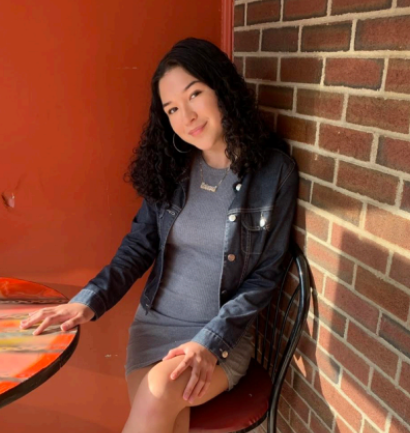 |

|
This course was developed by the American Red Cross and the Federal Emergency Management Agency (FEMA) to train participants in sheltering practices and techniques. It is designed for use with its companion piece, the Shelter Field Guide. There are no prerequisites for this course.
Course Length: Total Time: 10 hours over 2 days. Class Time: 8 hours (EST)
Course Dates:
|
Date
|
Time
|
Last Day to Register
|
|
January 19–20
|
11am-4pm
|
December 31, 2022
|
|
January 25–26
|
12-5pm
|
January 5, 2022
|
|
February 16–17
|
11am-4pm
|
January 27, 2022
|
|
February 22–23
|
12-5pm
|
February 2, 2022
|
|
March 23–24
|
11am-4pm
|
March 2, 2022
|
|
March 29–30
|
12-5pm
|
March 2, 2022
|
|
April 20–21
|
11am-4pm
|
March 31, 2022
|
|
April 26–27
|
12-5pm
|
April 6, 2022
|
|
May 18–19
|
11am-4pm
|
April 28, 2022
|
|
May 24–25
|
12-5pm
|
May 3, 2022
|
|
June 21–22
|
11am-4pm
|
June 1, 2022
|
|
June 29–30
|
12-5pm
|
June 7, 2022
|
Allotted time for technical difficulties (2 hours)
To Apply:
Prospective students for both courses should apply through the Emergency Management lnstitute’s online admissions system.
|
|
|
|
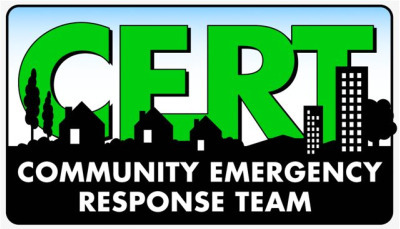 |
|
You can start informing more community members about the benefit of CERT using the CERT fact sheet, now available in six languages, including English, Spanish, Korean, Vietnamese, Traditional Chinese, and Simplified Chinese.
The multi-language fact sheet can help you reach more community segments and reduce barriers for ethnic and non-English speaking groups, who may not have known about CERT. You can use this fact sheet as a marketing tool and gain their interest in CERT.
|
Your CERT resources and volunteer opportunities must be accessible to all community members. When you attract a diverse set of CERT volunteers, you can strengthen your CERT, and most of all, impact your community. Order the CERT fact sheet today.
FEMA has released National Qualification System (NQS) Job Titles/Position Qualifications and Position Task Books (PTBs) for three CERT positions:
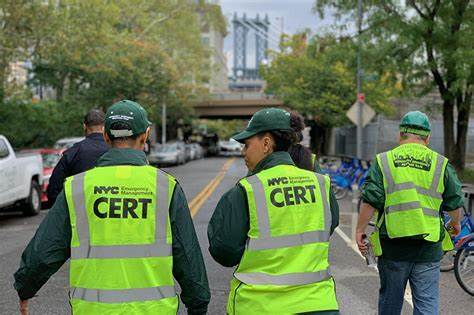 |
|
-
CERT Chief - a volunteer who is responsible for a specific functional area within the CERT
-
CERT Team Leader - a volunteer part of a CERT who directs team activities
-
CERT Volunteer - a volunteer who is a part of a CERT and trains in basic disaster response skills, such as fire safety, light search and rescue, team organization and disaster medical operations
|
|
These resource typing documents will facilitate the sharing of deployable CERT positions at all jurisdictional levels.
|
|
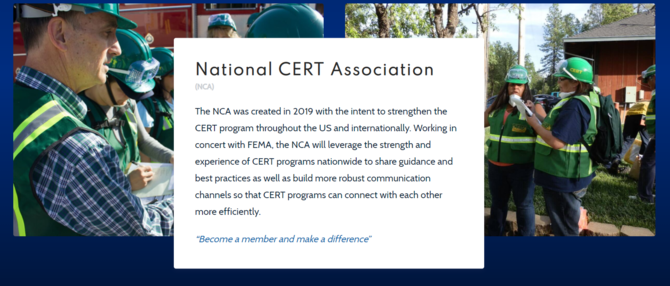 National CERT Association is currently looking for regional representation. If you are interested in joining the National CERT Association please click here to get redirected to the webpage
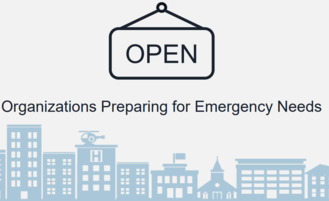 |
|
This is a course for community organizations, houses of worship, businesses, nonprofits, and community members that are looking for initial first steps toward being ready and prepared for all disasters. The training simplifies preparedness into 10 Preparedness Actions that are easy to follow and quickly implement into any home or business structure. We get people thinking, "where is my organization vulnerable, and how can I take steps to avoid shutting down operations if we were hit with a disaster?" |
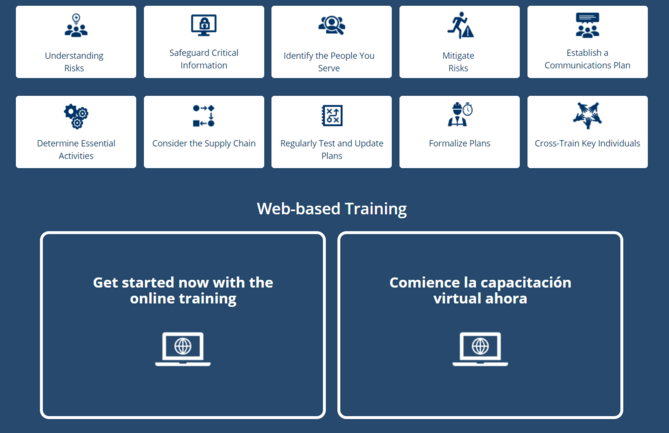 To access OPEN online, please visit Ready.gov as OPEN is not completely an online training resource. For the first time, you can now access the online training for OPEN and have the ability to interact with different video overviews of some of the preparedness actions. In addition, anyone has access to download the OPEN training materials.
OPEN includes both a web-based, self-guided training, and a downloadable instructor kit that will guide participants on how to identify risks, locate resources, and take preparedness actions. To be directed to the Ready.gov web page for OPEN, please click on the images above, or click here
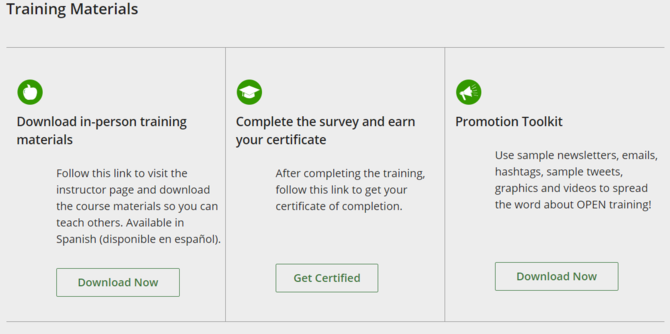
FEMA Region 1 ICPD has a whole suite of trainings that cover everything from preparedness 101 to youth preparedness to resilience in the face of a disaster. As we approach "normal" again, we would love to engage with partners on the ground in all 6 states to provide these trainings. We are able to provide many of these trainings virtually as well as in person. Please see the summary below for each of the trainings we help to deliver in Region 1.
For a full list of trainings being delivered, please refer to the Emergency Management Institute. Click here to be redirected to the EMI central hub online
To obtain a FEMA student Identification number please CLICK HERE!
Suggested Training Topic List:
|
|
E0360: Preparing for Emergencies: What School Staff Need to Know
|
|
|
L0489 Management of Spontaneous Volunteers in Disasters
|
|
E0417: Mass Care/Emergency Assistance Shelter Field Guide Training
|
|
|
E0418: Mass Care/Emergency Assistance Planning and Operations
|
|
|
L0426: Building a Roadmap to Resilience: A Whole Community Training
|
|
|
E0427: CERT Program Manager
|
|
|
E0428: CERT Train-the-Trainer
|
|
|
L0146 – Homeland Security Exercise Evaluation Program (HSEEP): Basic Course
|
|
|
E0431: Understanding the Emergency Management Assistance Compact (EMAC)
|
|
|
E0210: Recovery from Disaster: The Local Community Role
|
|
|
L= Courses that can be taught locally
E= Courses taught at EMI
K= Courses taught on-line
|
|
|
Training Resources
|